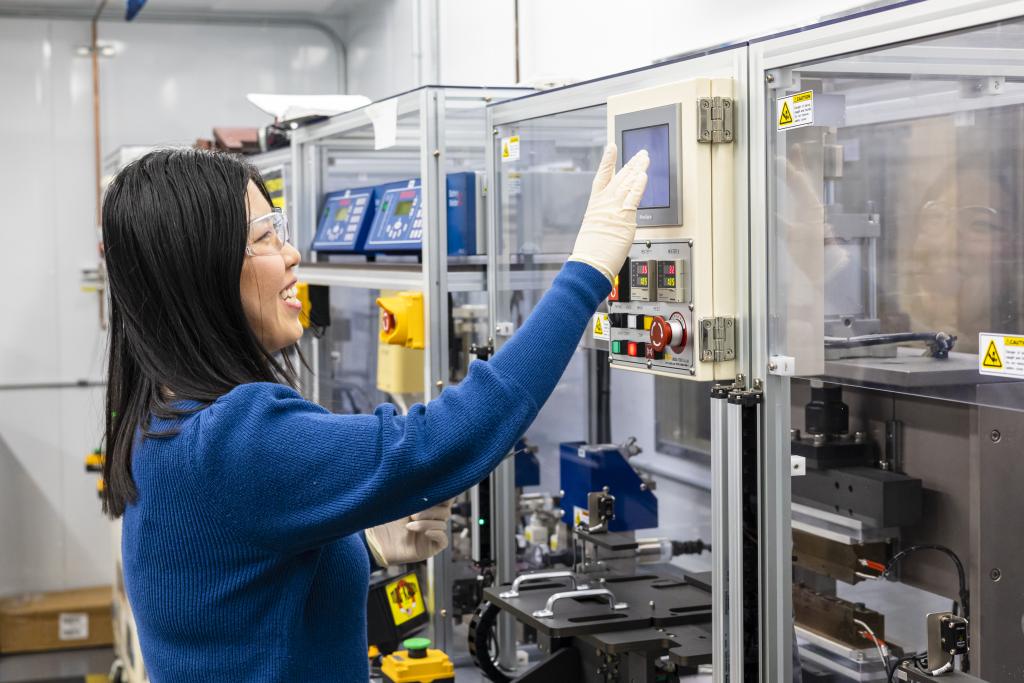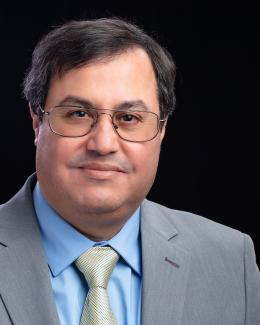
With increasing demand for low-cost batteries, the establishment of a domestic supply chain is a top priority. Oak Ridge National Laboratory is giving US manufacturers a boost by operating the country’s largest open-access battery manufacturing research and development center. The Department of Energy's Battery Manufacturing Facility (BMF) provides scientists the ability to analyze every aspect of battery production, from raw materials and electrode dispersion preparation to finished product and performance testing.
Using unique instruments and facilities, scientists are studying battery materials from the atomic level sizes up to 7 Ah pouch cells. Researchers are exploring the use of advanced materials such as high-voltage ceramic oxides and Si nanoparticles to improve the energy density of lithium-ion batteries. High-resolution microscopy, microstructural and magnetic characterization, high-resolution chemical mapping, 3-D surface profiling, and mechanical pinch testing capabilities enable in-depth investigation of new battery materials. Scientists also use advanced computational modeling to accelerate prototyping of cell designs, to screen new battery materials, to determine the effects of electrode coating defects on cell performance, and to develop accurate lifetime predictions.
Open to any US battery manufacturer, material supplier, equipment manufacturer, or battery end user, the center offers the ability to integrate any component into a complete battery and analyze how well it works and how it can be improved. Users can access individual processes and steps in a plug-and-play manner, and laboratory staff can provide help and guidance every step of the way. The idea is to showcase the user’s material or process improvements and quantify the advantage they provide.
The BMF offers the ability to integrate any component into a complete battery and analyze how well it works and how it can be improved. The center can produce pouch cells of up to 66 × 99 × 12 mm and 7 Ah, large enough to make market decisions yet small enough to affordably demonstrate the impact of innovative technologies.
Equipment and Capabilities
- Colloid and dispersion design and characterization
- Mixing and coating technologies and processes
- Advanced drying and solvent removal technologies
- Solventless processing
- Electrode architecture optimization
- Computational manufacturing
- Thermal runaway characterization
- 65 m2 (700 ft2) dry space with 0.1% relative humidity
- 65 m2 (700 ft2) space with adjustable 0.1–15% relative humidity
- Multiple high-shear mixers
- Three coating and fabrication lines (two slot-die and one tape casting) with reconfigurable deposition modules
- Roll-to-roll calender for coating compaction
- Roll-to-roll corona plasma treater for surface energy enhancement
- High-power-density photonic processing for solid-state batteries
- Glove box space for wet chemistry and wetting characterization experiments
- Automatic stacking machine with Z-folding configuration
- Ultrasonic joining and vacuum sealing
- 375 channels ranging from 200 mA to 100 A for battery cycling
- Multiple environmental chambers for low and high temperature cell testing.


